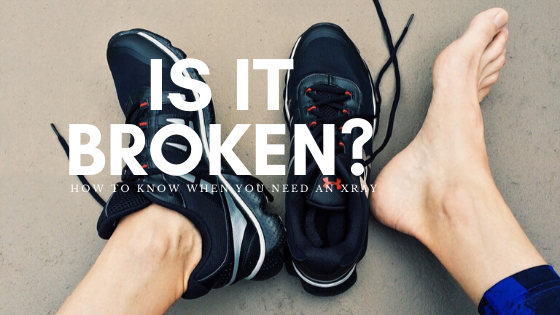Unfortunately, this is a question I get a lot when people come in after injuring their ankle. And although an X-ray is the typical gold standard for diagnosing a sprained ankle, if you are out of the country, in the middle of a hike or about to start a competition you might not have time to get to a hospital.
The following general rules can be applied if you need to know in a hurry**. The Ottawa ankle rules were developed and published in 2001 by Dr. Ian Stiell.and his colleagues. The rules are based on years of research that studied when it was appropriate to order X-rays for a broken ankle. The Rules site that ankle x-rays are ONLY required if you have:
- Pain in the malleolar zone.
AND
2. Bone tenderness at the posterior edge or tip of the lateral malleolus (the bottom and back part of the outside ankle bone).
OR
Bone tenderness at the posterior edge or tip of the medial malleolus (the bottom and back part of the inside ankle bone).
OR
An in ability to bear weight both immediately and in the emergency room for four steps.
A similar set of rules are also available for foot X-rays. They should only be ordered if:
- There is pain in the midfoot zone.
AND
2. Bone tenderness at the base of the fifth metatarsal (The outermost bone in the outside of your foot).
OR
Bone tenderness at the navicular (the bone on the inside of the foot just in front of the ankle joint)
OR
An in ability to bear weight both immediately and in the emergency room for four steps.
As I said above, if you are not sure if your ankle is sprained or broken you should always seek the advice of a trained healthcare professional. This post is meant to be a guide that is backed up by years of research but it cannot replace an assessment. For help or advice from the team at iclickphysio.com please fill in the contact form and we can assess you virtually from anywhere in the world.
**You should always seek medical attention if you are seriously injured. This information is not meant to replace a proper assessment**

